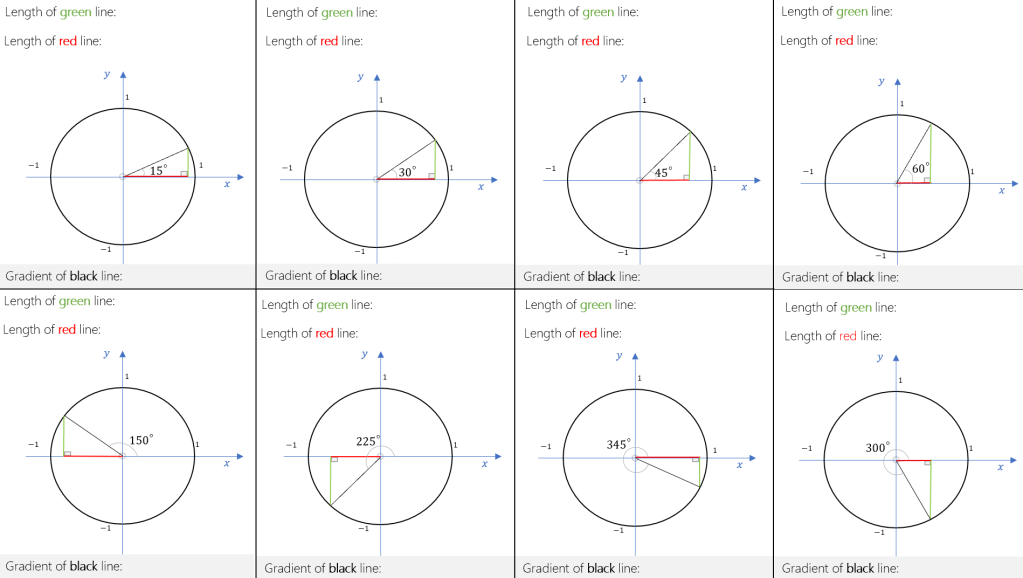I’ve introduced Trigonometric Graphs through the unit circle a number of times, and I’ve never been overly happy with it.
Students seem mystified and struggle to attach it to their current understanding of right angled trigonometry. I suppose this is why memory aids such as CAST have been created. I think this should be avoided, with time dedicated to understanding the unit circle in depth instead.
These tasks are designed to attach students’ prior learning of right angled trigonometry, to the new learning of the unit circle. Laying the foundations before they see any trigonometric graphs, focusing their attention on which triangles have the same lengths and why. Extending this to finding the co-ordinates of where the radii touch the circumference.

Extending with:

At this point, most students have generalised that the (x,y) is (cosθ, sinθ) and we discuss this as a class. This is important for the next part of the learning sequence, as I want them to notice their relationship with tanθ through the gradient of the radii.

We can extend this task by asking: where will the gradient be zero? Where will it tend towards infinity?
Drawing attention to the gradient calculation by asking “where is the change in y and change in x are on the unit circle?” So that can see that:

Now to make the connection with tanθ. Asking students to quickly calculate the below on their calculator, they can spot that this provides a much more efficient way to calculating the gradient of the radii.


This isn’t in the Ks4 curriculum, but it adds to the richness of their experience of the unit circle. It also helps explaining why the graph of tanθ contains vertical asymptotes, as we are dividing by 0 at these points.